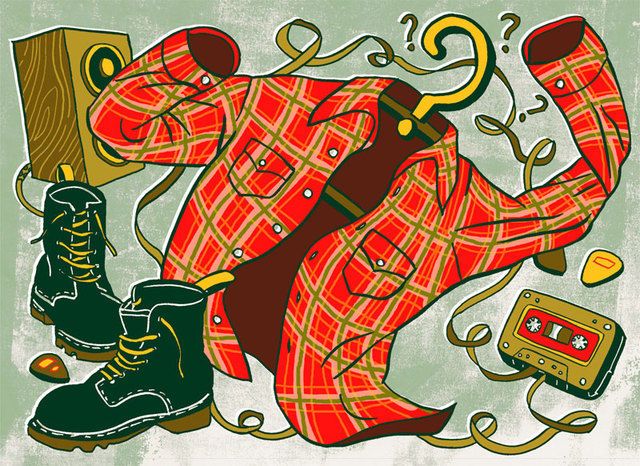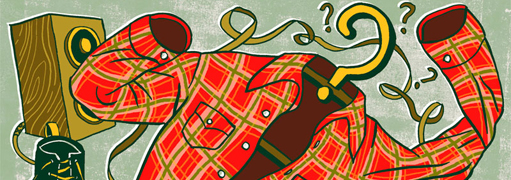Who would protect our youth? Who would succumb to the dynamo of societal crumbling as power lines and suburban homes usurped arbor-lined streets. When a guitar was all that mattered, we had so much to look forward to. And like a force reminiscent of Poseidon shucking a wave at a lopsided schooner, its chords permeated the mountain air with its visible urgency. At that moment in time, who but those lonely kids in tattered jeans, flannel shirts (with ironic T-shirts underneath) could encapsulate the angst, sadness and lively rage that existed for the few, the brave and the lost? Who would take to the stage, muscles atrophied from needles and beers, and ask for your time, your presence or even your life?Who—save Melvins, Mudhoney, Nirvana, Pixies, The Breeders, Hole, Babes in Toyland, 7 Year Bitch or L7—would gather on a concrete mass, microphone in hand, awaiting the hot, red sun’s descent and the music’s takeover. Onlookers swayed to the sound of their own feet, and stars watched over the hot, aural ash spewing from the volcano of grunge. Who would remember this, and who would return to this?Seattle and Aberdeen, Wash. and Portland, Ore. comprised a holy sonic grail that rattled the cages of record execs and forced them to open their eyes to an authentic phenomenon that would not only stand the test of time, but that would exist outside the realm of modern culture. Fusing the angst of punk, the hardcore sensibilities of metal and the offhand ethics of alternative music, it would exist for the common man, and for the man with no soul.It would divert its mantras toward the MTV crowd, saying to them, “This is what it means to be alive. This is what it means to suffer the strain of living, and to go through the shit one more time and say, ‘This is what it means to live.’” It would exist outside the borders of two adjacent states, flowing like a winding river through the rest of the country and eventually the globe.You had Kurt Cobain, Kat Bjelland, Mark Arm and Kim Deal. They were masters of a nascent craft, and they battled the idea of perfection, letting that illusion implode as they shared their drug-addled torture with a world that was willing to shut them out, pack up their suitcases and say, “You don’t belong here.”And yet, they persevered, trudging through the muck toward Top-40 hedonism and said, “This is not the only way.” Still, who did they sing for? Who walked the plank of servitude, begging for one more chance to dive into uncharted waters—alive with fuzzy riffs, whopping drums and vocals that recalled animalistic howls of the days of old—and search the ad-sacked globe for an opportunity to say, “I matter!” Who lived under renegade bunkers, belting out G and C chords as if that were the only way to move on, or at least take a step forward.Who was listening when In Utero delivered its stark, hypnotic and defiant lilt to the faceless androids who were too wasted to understand its contents, or too focused to really let it sink in? Who was really listening? Who tried to decipher the hidden meaning in Babes In Toyland’s "He’s My Thing," rather than merely existing in its static overture? Who still listens for that half-howl, half-prayer?As history rewrites the faulty fragments of who came first, who made his or her mark, who worked their asses off for a slice of bread and a torn dollar bill, they stand—ready, wanting and unafraid—digging into the soil with their holey shoes and dirt-marked pants, knowing the end that was once fated for a band with no direction has now severed itself like a giant scissor hacking away at a blue ribbon.Even today, whether they’re “Walking with a Killer,” or hiding in the shadows of marriage and retirement, the soldiers of yesteryear still march on, ignited by the fury and force that this so-called grunge movement set forth with from the beginning. It wasn’t always about anger, angst and sadness. No, it wasn’t always about a need to prove one’s worth. It wasn’t even about the idea that a revolution in music was needed. It was about existing with a purpose. It was about losing the image of perfection for the sake of creating something genuine—something that thrashed the lukewarm diets of suburban sentiment. It was about the music. It was about freedom. It was about the idea that on this godforsaken planet housing the illusion of accomplishment, that maybe just existing in that (or this) moment is enough to break on through—or at least make a dent. It was weird, it was gross, it was beautiful and it was dark, but it was there.
Listen to the Alibi’s expansive, hour-long grunge playlist—featuring tracks by scene stalwarts like Nirvana, Mudhoney and Melvins, grrrl-powered bands like L7, Babes in Toyland and 7 Year Bitch and obscuro outfits like Coffin Break, Killdozer and Auntacid—here: bit.ly/alibigrunge



